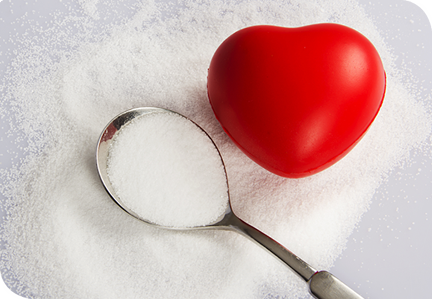Sodium and Hypertension: Put Down the Salt Shaker
 January 12, 2022 – Before you pick up the salt shaker, consider the dangers of too much sodium in your diet.
January 12, 2022 – Before you pick up the salt shaker, consider the dangers of too much sodium in your diet.
Sodium, the main component in table salt, has been shown to be detrimental to the body in high quantities, including its effect on blood pressure.
According to the American Heart Association, when there’s extra sodium in your bloodstream it pulls water into your blood vessels, increasing the total volume of the blood inside. With more blood flowing through, your blood pressure increases. Over time, high blood pressure may overstretch or injure the blood vessel walls and the added pressure tires out the heart by forcing it to work harder to pump blood through the body.
Hypertension, or high blood pressure, is known as the silent killer and it continues to be a problem not just in the United States but all over the world. Here are a few stats* to note:
- Hypertension is one of the major risk factors for heart disease, the #1 killer of men and women worldwide.
- It is also the leading risk factor of women’s death in the U.S., and the second leading risk factor for men’s death.
- One third of American adults have high blood pressure, and 90% of American adults are expected to develop high blood pressure over their lifetimes.
- More than 40% of non-Hispanic black adults have high blood pressure. Not only is high blood pressure more prevalent in blacks than whites, but it also develops earlier in life.
“Even if you currently don’t have high blood pressure, reducing your intake of sodium still has a number of health benefits,” said Ashley Patterson, RD, LD, a dietitian at Phoebe Sumter Medical Center. “Eating less sodium not only decreases your chances of eventually getting high blood pressure, but it also reduces your risk of a heart attack, heart failure, stroke and much more. It could also help you decrease weight gain caused by bloating.”
A decrease in sodium would also benefit the country financially and overall health. According to the American Heart Association, one estimate suggested that if the U.S. population moved to an average intake of 1,500 mg/day sodium from its current level, it could result in an estimated 26% decrease in high blood pressure and an estimated $26 billion in healthcare savings.
So, how do we rid ourselves of sodium dependency? Patterson has a few answers that may help.
“We stress to our patients to strive for a D-A-S-H diet,” said Patterson. “DASH is an acronym for ‘Dietary Approaches to Stop Hypertension’. It incorporates a diet of produce, low-fat dairy, whole grains, lean proteins, beans and nuts. This type of diet emphasizes having a low intake of not only sodium, but fat, sugar and red meat.”
Patterson said that is also important that we don’t add salt to our food as well.
“Instead of adding salt, we encourage you to add spices or flavorings instead. There are a number of salt-free seasoning blends out there, and you should never add salt when cooking rice, pasta or hot cereal. Also, you can remove some of the sodium from canned foods such as tuna by rinsing,” she continued.
“Last but not least, we stress to our patients to buy foods labeled ‘no salt added’, ‘sodium-free’, ‘low sodium’ or ‘very low sodium.’ Also, be cautious of food marked ‘reduced sodium’ or ‘light sodium.’ This usually means the sodium has been reduced by 25 percent to 50 percent, compared to the regular version, but in all likelihood these foods may still be very high in salt.”
For more information on how you can reduce your sodium intake and on the D-A-S-H Diet, contact Patterson at (229) 924-6011.
*Source: American Heart Association